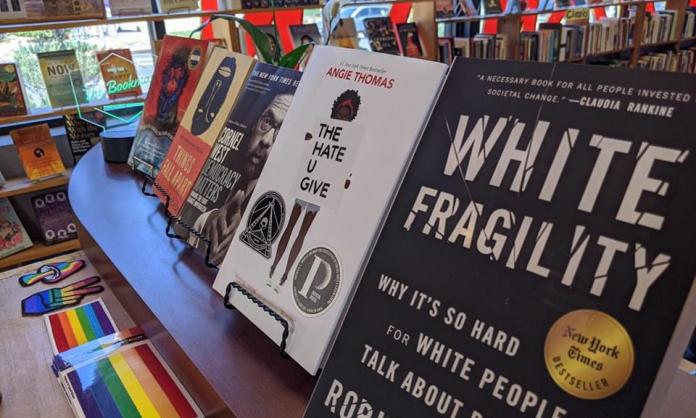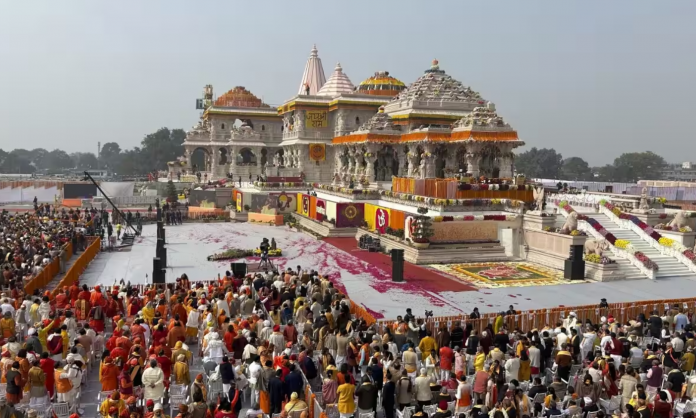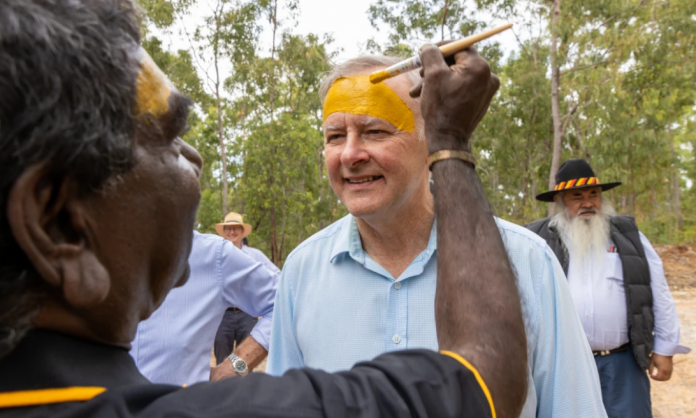White Fragility author Robin DiAngelo has a racket to rival that of the Catholic Church. Instead of penance, there is workplace diversity training. Begging priests for forgiveness in the confessional has been replaced by meet-ups with hapless Black acquaintances to deconstruct week-old micro-aggressions. The collection plate has also evolved considerably. But the unending, and of course ultimately futile, struggle for personal salvation at the heart of the operation is the same.
It is incongruous that this original sin model of racism continues – if book sales are any guide – to be so popular at a time when the most multiracial, far-reaching and radical struggles against racism and police brutality in more than half a century are shaking the foundations of the world’s most powerful state. People marching together in their hundreds of thousands and showing collective disdain for everything they are taught to respect – from historical monuments to police cars and flashy shops – are electrifying a new generation that has come of age in a world of endemic inequality and murderous racism. The movement is bringing together people with vastly different life experiences in pursuit of a common objective, and in so doing is lifting political consciousness out of the mire of individual moral virtue and onto the terrain of mass struggle and solidarity.
It is the antidote to the hopeless, internalised and individualised world view on offer inside the pages of White Fragility. “White fragility” refers to the defensiveness that, in US academic and corporate diversity trainer DiAngelo’s schema, all white people exhibit when challenged about racism. It is “a state in which even a minimum amount of racial stress ... becomes intolerable, triggering a range of defensive moves [including] the outward display of emotions such as anger, fear, and guilt and behaviors such as argumentation, silence, and leaving the stress-inducing situation”. Such defensiveness is “born of superiority and entitlement” and “a powerful means of white racial control and the protection of white advantage”.
It is impossible, according to this logic, for a white person ever to behave in anything other than a racist manner. They either accept their racism, and pay someone like DiAngelo to help probe its depths, or dispute it, and in so doing confirm their own prejudice and compound the transgression through denial. It is the ultimate self-fulfilling prophecy, or lucrative business model if you happen to be in the diversity business.
Even embracing the schema doesn’t help. DiAngelo relates in the book how one unfortunate diversity training participant made the mistake of asking how they might navigate white fragility when they encountered it, only to be called out on their own white fragility, evidenced by their desire to discuss the fragility of others in order to deflect from their own (textbook white fragility).
In this and most of the book’s other examples, it is the desire not to be racist that demonstrates most compellingly to DiAngelo the true depths of prejudice and white fragility. What to many might be an encouraging sign in the apartheid-like conditions of the US – that most workers forced by their boss to undertake diversity training frequently express a pre-existing opposition to racism and take umbrage at the corporate diversity trainer accusing them of it – is to DiAngelo simply evidence of ever more stubborn fragility and egregious prejudice.
We’re supposed to relish her tales of dragging workers over the coals for minor transgressions and delight in their transparent displays of fragility and “racial stress” when they object. But this is no win for anti-racism. It is a win for the parasitic diversity industry. It is a win for bosses who have bought themselves some protection against discrimination proceedings through hiring people like DiAngelo. And it is a win for all those on the right whose dismissal of genuine social justice efforts as just another way to belittle, admonish and punish people who have minimal control over the world around them is given credence by DiAngelo’s approach.
Bludgeoning backward attitudes out of workers at management’s behest will never be social justice activism, and university-trained management consultants don’t lead anti-racist movements – their very existence seems calculated to provoke outright hostility to the cause. Nor have guilt and introspection ever animated mass movements capable of winning real social change.
But that is not DiAngelo’s aim. Her argument for this lifelong work of self-purification is, as she argues at the book’s conclusion, that it is “compelling and transformative” for those who undertake it. In other words, the objective is individual edification and the further enrichment of white people’s lives through a process in which Black people are a mere means to an end, a passive weathervane from which white people can read off their own level of racial virtue.
Leaving aside the problem with a book about racism having as its goal the improvement of white people’s lives, this quasi-therapeutic model of anti-racism as “doing the work” of personal introspection and education is one that is unfortunately widely subscribed to on social media and amplified by the mainstream media. It expresses a certain mood: that of the underappreciated prophet exhausted by the inadequacy of others’ anti-racist efforts. Numerous opinion pieces ruminate on how exhausting it is that larger numbers of people are now interested in anti-racism, and how depressing it is that they weren’t interested before.
While the media recognise in this a new means to discourage and dishearten people who might be drawn to radical anti-racist ideas and struggle, it also reflects a certain commodification of anti-racism. Dismissing the potentially radicalising process of struggle and the rapid education that comes with that as “work” – like it’s putting out the bins – and quibbling over who should and shouldn’t be doing it reflects the mentality of a management consultant or bureaucrat, not an activist determined to destroy structural racism and all the brutality that comes with it.
As with other manifestations of this conservative anti-racism, White Fragility offers no solution to the systemic, structural basis of racism. It has no answer to the question of how to change a society that continually reinforces racist attitudes through forcing Black people into low paid jobs and poor quality housing, denying them basic social services and victimising them through state violence and the prison system. This might not be a problem from the point of view of the multi-billion-dollar diversity industry, but it should concern genuine anti-racists.
Structural racism is not caused by micro-aggressions, objectionable though they may be. Nor do all white people have a hand in maintaining this reality – many of the same policies and social dynamics that keep Black people down also work against poor and working class white people. Racism is the product of an economic system structured to maximise the exploitation of those without significant wealth of their own, both Black and white. In this system, differences among the exploited – whether race, gender, age, sexuality, nationality or immigration status – are seized on to intensify the degree of exploitation for particular groups, sow division or coerce unpaid labour from them.
Only a mass movement oriented to a source of real collective power – the industrial muscle workers have at the point of production – and that aims to unite all the oppressed can effectively challenge this system and create a society of genuine equality. Such a movement requires all workers to develop an awareness of the way in which particular groups are oppressed, which means it matters that white as well as Black workers are conscious of racism. But to avoid being paternalistic, this must be based on a recognition of common interests and a common enemy. As Karl Marx argued 150 years ago as to why British workers must be won to supporting the Irish struggle against the British ruling class: “This is not a question of abstract justice or humanitarian sentiment but for them the first condition of their own social emancipation”. The centrality of Black workers to the US working class only makes this argument more critical.
Working life itself goes some way to undermining such division. The everyday challenges of work and shared experience of surviving on a wage inevitably foster a sense of camaraderie that can challenge instilled prejudices. Even DiAngelo admits that poor and working class whites tend to be less segregated and “racially insulated” from Black people. The workplace in particular – ironically the forum of choice for DiAngelo’s counterproductive corporate anti-racism – is one of the few places in which people of different backgrounds meet as equals, and the collaborative nature of work, while not radicalising like struggle, nevertheless brings to light a certain commonality that the system works hard to obscure.
But the potential for unity is most obvious when people are engaged in the active process of organising around and fighting for their interests, whether to advance their rights at work or to protest social injustice. Such struggles forge bonds of solidarity across traditional divides and make clear where the real social division is – between those who benefit from the status quo and those who have an interest in challenging it. Like the 250,000 who marched on Washington for civil rights in 1963, at which Bob Dylan implored the crowd to look past the shameful acts of individuals to the wider social structure in his performance of “Only a pawn in their game” – no doubt an anthem of white fragility in DiAngelo’s eyes. Or the many thousands of people marching and organising today, and who are drawing support – and opposition – from some unexpected places.
At their most developed, these movements create a new context for human interactions, one not dominated by racial (and other) inequalities but based on mutual respect and solidarity. They create the social conditions in which people can meet as equals, not be trained to act like inequality doesn’t exist.
Those who participate in such struggles inevitably do so with a range of ideas in their heads, most inherited from the society in which they’ve been socialised, but others given life by the experience of oppression and resistance to it. Out of the resulting turmoil comes the possibility for lasting transformation, at both a social and individual level.
This is the dynamic that should matter to anti-racists. It is where the potential for liberation lies, a potential that is on full display on the streets today. This, not punitive, HR-initiated diversity training, provides hope that racism can one day be eliminated for good.











